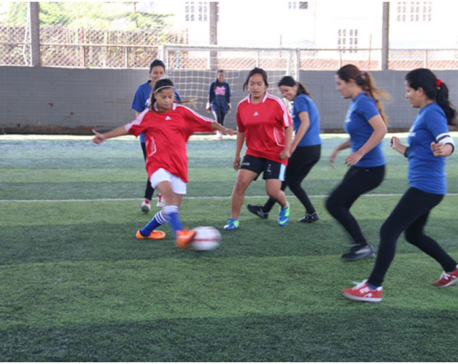
OR
'Women home-based workers play significant role in cardamom production'
Published On: July 11, 2019 04:30 AM NPT By: Republica | @RepublicaNepal
KATHMANDU, July 11: Women home-based workers play significant role in production and processing of large cardamom, according to a World Bank study released on Wednesday.
Speaking at an event in Kathmandu to launch the report, Chandra Prakash Ghimire, secretary at the Ministry of Women, Children and Senior Citizen, said production of large cardamom engaged a larger number of rural people of Nepal. The study revealed that 90% of the workforce in cardamom cultivation was comprised of women.
“Being influenced largely by the theory of comparative advantage, Nepal brought out Nepal Trade Integration Strategy (NTIS) in 2010 and 2016. The second one is still in effect,” he said.
The report entitled 'Understanding the Role of Women Home-Based Workers in Value Chains of Large Cardamom and Allo in Nepal' determines that large cardamom production is a critical source of livelihood generation for a majority of women home-based workers.
According to the report, women take the lead in nurturing and harvesting the crop before it travels through local markets and trading centers, from where it is exported to India. Nepal is the world's largest producer of large cardamom, with an annual production rate of 5,000 to 6,000 metric tons.
The production of large cardamom has expanded to 41 out of the 77 districts. Bhutan and India follow Nepal in the volume of production. The main production districts of Nepal are Taplejung, Panchthar, Ilam, and Sankhuwasabha. About 98% of Nepal's production is exported and even though most actors expect the value chain to make attractive returns, it is heavily dependent on Indian traders. Nepali traders have little role in price determination.
Dr Usha Jha, member of the National Planning Commission, said: “Nepal can provide a platform for the neighboring countries - Bhutan and India growing this highly valued spice, to enlarge the pie and seek new markets in South East Asia, while propagating this eastern Himalayan region as a spice corridor.”
HomeNet South Asia (HNSA), a network of home-based worker organizations in South Asia, led the study. The study shows that the cash crop enjoys a lucrative market, and the incomes generated from it have made immense contributions to improving the lives of women involved.
Faris H. Hadad Zervos, country manager of World Bank for Nepal said: “Putting in place a system of gender-disaggregated and gender-specific data collection, introducing women-friendly technology and tools for production and processing, and supporting women's institution building for skill enhancement and marketing will go a long way in ensuring effective and appropriate returns to investment in the cardamom industry."
The report was launched during a multi-stakeholder consultation on South Asia's large cardamom value chain development prospects hosted by the World Bank, with participation from government officials from Nepal, Bangladesh, and India. The consultation meeting focused on women's entrepreneurship in the large cardamom value chain in Nepal, India and Bhutan, and also explored such opportunities in Bangladesh.
You May Like This

Futsal for the women, by the women and of the women!
KATHMANDU, March 19: WE United Project launched the Mahila Premier League (MPL) on March 18 at Grassroots Recreational Center in Mandikhatar. ... Read More...

Applications sought for women MSME FinTech Ion Fund
KATHMANDU, March 13: The UN Economic and Social Commission for Asia and the Pacific (UNESCAP) and the UN Capital Development Fund... Read More...

Is women empowerment just women employment?
If this day is to celebrate your and my achievements, then it does not need to be marked in the... Read More...






Just In
- Challenges Confronting the New Coalition
- NRB introduces cautiously flexible measures to address ongoing slowdown in various economic sectors
- Forced Covid-19 cremations: is it too late for redemption?
- NRB to provide collateral-free loans to foreign employment seekers
- NEB to publish Grade 12 results next week
- Body handover begins; Relatives remain dissatisfied with insurance, compensation amount
- NC defers its plan to join Koshi govt
- NRB to review microfinance loan interest rate











Leave A Comment